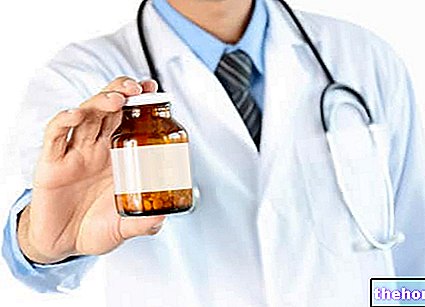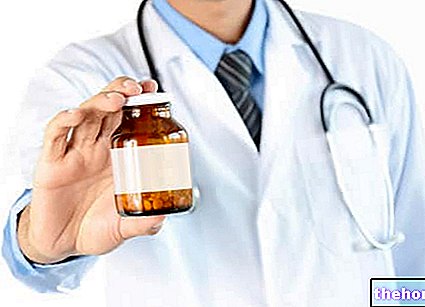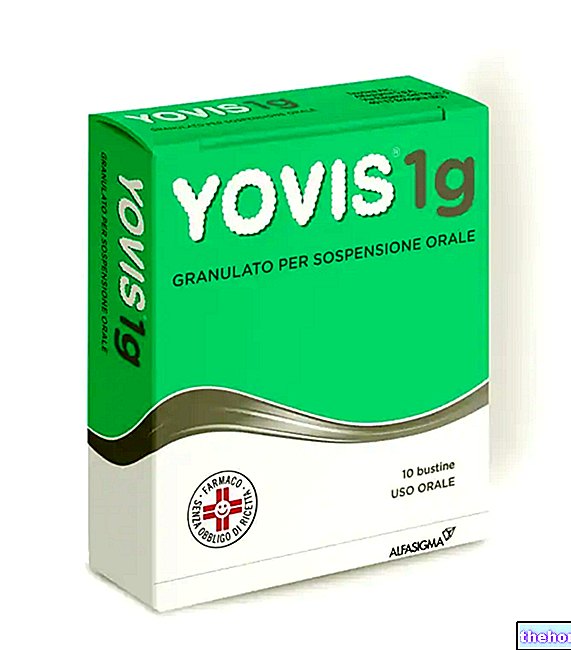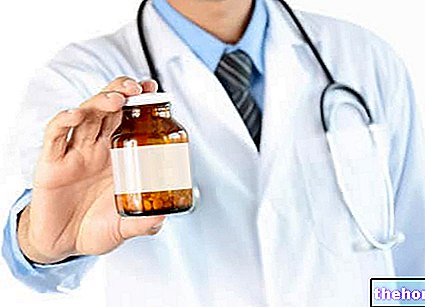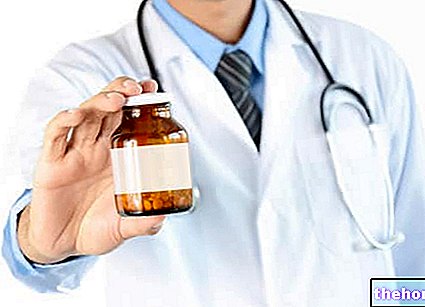Active ingredients: Dinoprostone
PROPESS 10 mg vaginal device
Indications Why is Propess used? What is it for?
PROPESS is indicated to help the onset of childbirth from the 38th week of gestation. Dinoprostone promotes dilation of the part of the birth canal known as the cervix, to allow the baby to pass through.There are several situations that lead to needing help in starting this process. If you would like more information, ask your doctor.
Contraindications When Propess should not be used
Propess must not be given to you:
- if the size of your baby's head indicates that problems may occur during delivery
- if your baby is not positioned correctly in the womb, to be able to be born naturally
- if your baby is in poor health or has fetal distress
- if you have had more than three full term deliveries
- if you have had previous surgery or a ruptured cervix
- if you have untreated pelvic inflammation (an "infection of the uterus, ovaries, fallopian tubes and / or cervix")
- if the placenta is blocking the baby's exit channel
- if you have or have had unexplained vaginal bleeding during this pregnancy
- if you have had previous uterine surgery including a previous caesarean section for any previous baby
- if you are hypersensitive (allergic) to dinoprostone or to any of the other ingredients of this medicine (listed in section 6).
Your doctor or nurse will not give you PROPESS or will remove it after it has been inserted:
- once labor begins
- if you need to be given a medicine such as an oxytocic to help continue labor
- if your contractions are too strong or prolonged
- if your baby begins to have fetal distress
- if you experience side effects (see section 4. Possible side effects).
The experience of using PROPESS in the event of a water break is limited. Your doctor or nurse will remove PROPESS after its administration if the water breaks naturally or by the intervention of your doctor or nurse.
Precautions for use What you need to know before taking Propess
Before you are given PROPESS, tell your doctor or nurse if any of the following occur:
- if you have or have ever had asthma (difficulty breathing) or glaucoma (an eye disease)
- if you have suffered from too strong or prolonged contractions in a previous pregnancy
- if you have lung, liver or kidney disease - if you are about to have a twin birth
- if you are taking a pain reliever and / or anti-inflammatory drug containing non-steroidal anti-inflammatory drugs (also known as NSAIDs) eg. aspirin
- if you are 35 or older, if you have had complications during pregnancy, such as diabetes, high blood pressure and low thyroid hormone levels (hypothyroidism), or if your pregnancy is beyond 40 weeks, due to the increased risk of developing clotting disseminated intravascular (DIC), a rare disease involving blood clotting.
Interactions Which drugs or foods can modify the effect of Propess
Tell your doctor or nurse if you are taking or have recently taken any other medicines, including medicines obtained without a prescription.
Warnings It is important to know that:
Pregnancy and breastfeeding
PROPESS is used to help initiate full term delivery. PROPESS should not be used at any other stage of pregnancy or while breastfeeding.
Driving and using machines
Not relevant as PROPESS is only used in conjunction with childbirth.
Dosage and method of use How to use Propess: Dosage
Your doctor or nurse will place the vaginal device close to the cervix in the vagina. You do not have to do this alone. Your doctor or nurse will treat the device with a small amount of lubricating gel before insertion. left outside the vagina, so that the vaginal device can be easily removed when it is time to remove it.
She must lie down during these operations and remain lying down for about 20-30 minutes, after the insertion of PROPESS.
When placed, the vaginal device absorbs some moisture.
This allows the dinoprostone to be slowly released.
While the vaginal device is in place and induces the onset of labor, it will be monitored regularly to check:
- dilation of the cervix
- uterine contractions
- the pains of labor and the health conditions of the baby.
Your doctor or nurse will decide how long PROPESS should stay in place based on your progress. PROPESS can be left in place for up to 24 hours.
Upon removal of the product from the vagina, the vaginal device will have inflated 2-3 times its original size and will be flexible.
Overdose What to do if you have taken too much Propess
If you are given too much PROPESS this can lead to increased contractions or fetal distress. The PROPESS Vaginal Device will need to be removed immediately.
Side Effects What are the side effects of Propess
Like all medicines, PROPESS can cause side effects, although not everybody gets them.
A common side effect (affecting less than 1 in every 10 women treated) is increased contractions that may or may not affect the baby. The baby may be in pain and / or have a faster or slower heart rate than normal.
Uncommon side effects (affecting less than 1 in every 100 women treated) are nausea (feeling sick) or vomiting (being sick) and diarrhea.
Rare side effects (affecting less than 1 in every 1000 women treated) are rupture of the uterus or Disseminated Intravascular Coagulation (DIC), a rare disease that affects blood clotting. This can cause blood clots to form and can increase the risk of bleeding. The chance of DID developing during treatment with PROPESS may be higher if you are 35 years of age or older, if your pregnancy is past 40 weeks or if you have had complications during pregnancy such as diabetes, hypertension or a low level of thyroid hormones (hypothyroidism).
Particular attention should be paid to the risk, although very rarely (less than 1 in 10,000 women treated), of anaphylactic reactions (severe allergic reactions) including for example, difficulty in breathing, rapid or weak pulse, dizziness, red skin, which have been reported with products containing dinoprostone.
Not known (frequency cannot be estimated from the available data): amniotic fluid entering the mother's bloodstream (amniotic fluid embolism).
Swelling of the genital area has also been reported.
Reporting of side effects
If you get any side effects, talk to your doctor or nurse. This includes any possible side effects not listed in this leaflet. You can also report side effects directly via the national reporting system at www.agenziafarmaco.it/it/responsabili. . By reporting side effects you can help provide more information on the safety of this medicine.
Expiry and Retention
Keep this medicine out of the sight and reach of children.
Do not use PROPESS after the expiry date which is stated on the aluminum sachet and carton.
Store in the freezer. Store in the original container to protect from moisture.
Medicines should not be disposed of via wastewater or household waste. After use, your doctor or nurse will dispose of them as clinical waste. This will help protect the environment.
Other information
What PROPESS contains
- The active ingredient is dinoprostone, more commonly known as Prostaglandin E2. In each vaginal device there is 10 mg of dinoprostone which is released at approximately 0.3 mg per hour in 24 hours.
- The other ingredients are: Cross-linked polyethylene glycol (hydrogel) and polyester thread.
Description of the appearance of PROPESS and contents of the pack
The vaginal device is a small, oval-shaped plastic object contained in a retrieval system. The plastic object consists of a polymer hydrogel that swells in the presence of moisture releasing dinoprostone. The retrieval system has a long tape that allows the doctor or nurse to remove the device when needed.
The following information is intended for medical or healthcare professionals only
INSTRUCTIONS FOR USE
Application
- To remove PROPESS from the package, tear along the top of the foil pouch. Do not use scissors or sharp tools to cut the aluminum sachet as this can damage the product. Use the recovery system to gently extract the product from the sachet. Hold the vaginal device between the middle and index fingers and insert it into the vagina. If necessary, a small amount of water-soluble lubricant can be used.
- PROPESS should be placed across the top in the posterior vaginal fornix.
- Leave a portion of the tape (approximately 2 cm) outside the vagina to ensure easy removal of the vaginal device. The tape can be shortened if required.
- Ensure that the patient remains lying or sitting for 20-30 minutes after insertion to allow the vaginal device to swell.
Removing the device
PROPESS can be removed quickly and easily by carefully pulling the tape. After removal, make sure that the entire product (vaginal device and retrieval system) has been completely removed from the vagina.
Source Package Leaflet: AIFA (Italian Medicines Agency). Content published in January 2016. The information present may not be up-to-date.
To have access to the most up-to-date version, it is advisable to access the AIFA (Italian Medicines Agency) website. Disclaimer and useful information.
01.0 NAME OF THE MEDICINAL PRODUCT
PROPESS 10 MG - VAGINAL DEVICE
02.0 QUALITATIVE AND QUANTITATIVE COMPOSITION
Each vaginal device consists of a non-biodegradable polymeric nature release device that contains 10 mg of dinoprostone (Prostaglandin E2) dispersed in its matrix.
For the full list of excipients see section 6.1.
03.0 PHARMACEUTICAL FORM
Vaginal device.
PROPESS comes in the form of a vaginal device consisting of a thin, flat and semi-opaque polymeric material, rectangular in shape with rounded corners wrapped in a polyester mesh system that allows it to be recovered.
04.0 CLINICAL INFORMATION
04.1 Therapeutic indications
PROPESS is indicated for the induction of the maturation process of the uterine cervix in pregnant patients at term (from the 38th week of gestation).
04.2 Posology and method of administration
Dosage
Insert only one vaginal device up into the posterior vaginal fornix.
If within 24 hours the state of maturation reached by the cervix is judged insufficient, the vaginal device must be removed.
An interval of at least 30 minutes is recommended before proceeding with sequential administration of oxytocin after removal of the vaginal device.
Method of administration
Administration
PROPESS must be removed from the freezer only at the moment of use.
The vaginal device must be inserted high into the posterior vaginal fornix using only small amounts of water-soluble lubricant to aid insertion. After insertion, cut off the excess tape for removal so as to leave one outside the vagina. sufficient length to allow removal of the same. It is recommended not to try to insert the end of the tape into the vagina as this can make retrieval more difficult.
After insertion it is recommended that the patient rest for 20-30 minutes. Furthermore, since dinoprostone is released continuously for 24 hours, it is recommended that uterine contractions and the condition of the fetus be monitored at regular and frequent intervals.
Removal
The vaginal device can be removed quickly and easily by gently pulling on the recovery tape.
The vaginal device must be removed to stop drug administration if the cervix has matured completely or if the following circumstances occur:
1. Beginning of labor from childbirth. If PROPESS was used for the purpose of inducing labor, it must be borne in mind that the onset of labor is defined as that period characterized by the presence of regular painful contractions of the uterus that occur every 3 minutes regardless of changes in the cervix. important to consider two factors:
(i) Regular painful contractions that have been induced with PROPESS will remain so in frequency or intensity for as long as PROPESS remains in situ as dinoprostone will continue to be released.
(ii) Patients, especially if polygravid, can develop painful regular contractions without evident changes in the cervix. Disappearance and dilation of the cervix may not occur until uterine activity is established. It therefore follows that once PROPESS in situ induced regular uterine activity accompanied by the onset of pain, the vaginal device must be removed, regardless of the state of the cervix, in order to avoid any "hyperstimulation of the uterus".
2. Spontaneous or artificial rupture of membranes.
3. Any evidence of uterine hyperstimulation and hypertonic uterine contractions.
4. Obvious fetal distress.
5. Detection of systemic side effects to dinoprostone in the parturient, such as nausea, vomiting, hypotension or tachycardia.
6. At least 30 minutes before starting the intravenous infusion of oxytocin.
The opening on one side of the retrieval system is only present to allow the manufacturer to include the vaginal device in it during the manufacturing process.
The vaginal device must never be removed from the retrieval system.
After removal of the product from the vagina, the vaginal device will have swelled 2-3 times its original size and will be flexible.
04.3 Contraindications
PROPESS should not be used or left at the application site in the following circumstances:
1. when labor started.
2. when drugs with oxytocic activity have been administered.
3. when the presence of strong and prolonged uterine contractions is inappropriate, such as, for example, in patients:
a) who have already undergone a "major surgical operation at the uterine level such as caesarean section, myomectomy, etc. (see sections 4.4 and 4.8)
b) with cephalopelvic disproportion
c) with abnormal presentation of the fetus
d) with suspected or evident fetal distress
e) who have had more than three full-term parties
f) with a history of surgery or rupture of the cervix
4. when there is an inflammatory state at the pelvic level, if not before having instituted an "adequate therapy.
5. in case of hypersensitivity to dinoprostone or to any of the excipients listed in section 6.1.
6. when there is placenta previa or unexplained vaginal bleeding during pregnancy.
04.4 Special warnings and appropriate precautions for use
Before initiating therapy with PROPESS, it is recommended that the patient's cervix be carefully assessed. After the application of the device it is advisable to regularly monitor both uterine activity and the condition of the fetus.
PROPESS should only be used if equipment for continuous monitoring of the fetus and uterine activity is available.
If any signs or symptoms suggest maternal or fetal complications or if side effects occur, the vaginal device should be removed from the vagina.
The experience of using PROPESS in patients with ruptured membranes is limited. Therefore PROPESS should be used with caution in these patients. Since the release of dinoprostone from the device can be affected by the presence of amniotic fluid, special attention should be paid to uterine activity and the condition of the fetus.
PROPESS should be used with caution in patients who have had a history of uterine hypertonia, glaucoma or asthma.
Non-steroidal anti-inflammatory drug therapy, including acetylsalicylic acid, should be discontinued before administering dinoprostone.
If excessive or prolonged contractions occur, there is a possibility of uterine hypertonus or rupture of the uterus itself and in this case it is necessary to remove the vaginal device immediately.
Rupture of the uterus has been reported in association with the use of PROPESS, mainly in patients with contraindicated conditions (see section 4.3). Therefore PROPESS should not be administered to patients with a history of cesarean delivery or uterine surgery due to the potential risk of uterine rupture and associated obstetric consequences.
PROPESS should be used with caution in cases of multiple pregnancy, as no specific studies have been conducted in this regard.
Repeated administration of PROPESS is not recommended as the effects of subsequent administration have not been studied.
The use of the product in patients with diseases that may affect the metabolism or excretion of dinoprostone, such as pulmonary, hepatic or renal, has not been specifically studied. It is therefore recommended not to use the product in these patients.
Women 35 years of age and older, women with complications during pregnancy such as gestational diabetes, high blood pressure and hypothyroidism, and women with gestational age over 40 weeks, show a higher risk of developing postpartum disseminated intravascular coagulation (DIC) . These factors lead to an additional increase in the risk of DIC in women in whom childbirth has been pharmacologically induced (see section 4.8). Therefore dinoprostone and oxytocin should be used with caution in these women. In the immediate post-partum phase, the physician must carefully monitor any early signs of the onset of DIC (eg fibrinolysis).
The physician should pay attention to the fact that, as with other methods of induction of labor, the use of dinoprostone can cause an involuntary interruption and subsequent embolization of the antigenic tissue causing in rare circumstances the development of the Anaphylactoid Syndrome of Pregnancy (liquid embolism amniotic).
04.5 Interactions with other medicinal products and other forms of interaction
Prostaglandins enhance the uterotonic effects of oxytocic substances. PROPESS should not be used simultaneously with oxytocic drugs.
04.6 Pregnancy and breastfeeding
The product is indicated for the induction of the cervical maturation process in pregnant patients at term when the induction of labor is appropriate.
PROPESS is not indicated during the first months of pregnancy and in other phases of the same or during breastfeeding.
04.7 Effects on ability to drive and use machines
Not relevant.
04.8 Undesirable effects
Side effects observed occasionally are those commonly associated with intravaginal administration of dinoprostone.
Changes in cardiotocography (CTG) and non-specific fetal distress have been reported during and after intravaginal administration of dinoprostone. There was an increase in uterine activity with hypertonic contractions associated or not with fetal distress.
The risks of hyperstimulation are increased if the dinoprostone-releasing vaginal device is not removed prior to the initiation of oxytocin administration as prostaglandins are known to potentiate the uterotonic effects of this class of compounds.
The results of pilot studies for the evaluation of efficacy showed that in 5 patients (4.9%) out of 102 there was hyperstimulation and of these, in 3 cases there was fetal distress. In four of the five cases the "Uterine hypertonus resolved after removal of the device.
In the post-marketing period, reporting of membrane rupture associated with the use of PROPESS has been reported rarely (see sections 4.3 and 4.4).
An increased risk of post-partum disseminated intravascular coagulation (DIC) has been reported in patients whose delivery has been pharmacologically induced, with either dinoprostone or oxytocin (see section 4.4).
It is known that PGE2 is responsible for the patency of the ductus arteriosus during pregnancy, but there have been no cases of "blue babies" in the neonatal period following the use of PROPESS.
Reporting of suspected adverse reactions
Reporting of suspected adverse reactions occurring after authorization of the medicinal product is important as it allows continuous monitoring of the benefit / risk balance of the medicinal product. Healthcare professionals are asked to report any suspected adverse reactions via the national reporting system. "address www.agenziafarmaco.gov.it/it/responsabili.
04.9 Overdose
Overdose or excessive sensitivity to the product may induce hyperstimulation of the uterine musculature or fetal distress, in which case the vaginal device must be removed immediately and the patient treated as established by usual medical procedures.
05.0 PHARMACOLOGICAL PROPERTIES
05.1 Pharmacodynamic properties
Pharmacotherapeutic group: oxytocic.
ATC code: G02AD02.
Prostaglandin E2 (PGE2) is an endogenous molecule present in low concentrations in most tissues and acts as a local hormone.
Prostaglandin E2 plays an important role in determining all that series of biochemical and structural modifications involved in the maturation of the cervix, which consist in a marked relaxation of the smooth cervical muscle fibers of the cervix which must change from a rigid structure to a relaxed and dilated structure. to facilitate the passage of the fetus through the birth canal, a process that also involves the activation of enzymes such as collagenase, responsible for the demolition of collagen.
The local administration of dinoprostone in the cervix determines the maturation of the cervix which is the basis of the evolution of the subsequent events that complete the labor of delivery.
05.2 Pharmacokinetic properties
PGE2 is rapidly metabolized mainly in the tissues of its own biosynthesis. The quantity that escapes local inactivation is rapidly eliminated from the bloodstream with a half-life of approximately 1-3 minutes.
It is not possible to establish a correlation between the release of PGE2 and the plasma concentrations of its metabolite PGEm and consequently it is not possible to evaluate the relative contribution of PGE2, endogenous and exogenous, as a function of the plasma levels of its metabolite.
The reservoir of 10 mg of dinoprostone serves to maintain a controlled and constant release of the same. The release rate is approximately 0.3 mg / hour in 24 hours in women with intact membranes, while it is higher and more variable in women with premature rupture of the membranes. PROPESS releases dinoprostone into the cervical tissue at a constant rate that allows the progressive maturation of the cervix until completion of the same, allowing, if the doctor considers complete maturation of the cervix or in case the labor has begun, the easy removal of the source of dinoprostone.
05.3 Preclinical safety data
Preclinical studies have shown that dinoprostone is a locally active substance which is rapidly inactivated and therefore free from relevant systemic toxicity. Hydrogel and polyester polymers are inert materials with good local tolerability. Reproductive toxicity, genotoxicity or carcinogenicity studies of polymers have not been investigated, given the fact that systemic exposure is negligible.
06.0 PHARMACEUTICAL INFORMATION
06.1 Excipients
Cross-linked polyethylene glycol (Hydrogel).
Polyester thread.
06.2 Incompatibility
Not relevant.
06.3 Period of validity
3 years.
06.4 Special precautions for storage
Store in the freezer. Store the product in the original container to keep it away from moisture.
06.5 Nature of the immediate packaging and contents of the package
The individual PROPESS vaginal devices are packaged in hermetically sealed pouches made of aluminum / polyethylene foil. Each pack contains 5 vaginal devices.
06.6 Instructions for use and handling
PROPESS must be removed from the freezer immediately before its use.
After use, treat the product as clinical waste.
07.0 MARKETING AUTHORIZATION HOLDER
Ferring S.p.a. - Via Senigallia 18/2 - 20161 MILAN
08.0 MARKETING AUTHORIZATION NUMBER
A.I.C. No. 033372018
09.0 DATE OF FIRST AUTHORIZATION OR RENEWAL OF THE AUTHORIZATION
13.12.1996 / 13.12.2006
10.0 DATE OF REVISION OF THE TEXT
11 November 2015


